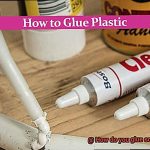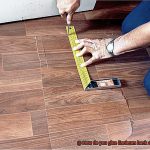Crafting, scrapbooking, and preserving memories require the right adhesive. But how can you be sure if the glue you’re buying is truly acid-free? In this blog post, we’ll dive into the nitty-gritty of identifying an acid-free glue. Armed with this knowledge, you’ll be able to choose the best adhesive for your creative projects. So let’s get started.
Why Acid-Free Matters:
Contents
Before we jump into identifying acid-free glue, let’s understand why it’s so important. Acidic substances can wreak havoc on delicate materials over time, causing yellowing, discoloration, and deterioration. Acid-free adhesives are specially formulated without any harmful acidic properties. This means your precious items will stay vibrant and intact for years to come.
Signs of an Acid-Free Glue:
- Product Labeling: Reputable glue manufacturers often label their products as “acid-free” or “pH neutral.” Keep an eye out for these claims on the packaging and make sure they’re genuine.
- Archival-Grade Certification: If you spot adhesives labeled as “archival-grade” or “museum-quality,” chances are they’re acid-free. These certifications assure that the glue has undergone rigorous testing to meet industry standards for long-term preservation.
- pH Test: While less common for everyday consumers, pH testing kits are available for those seeking extra validation. Acid-free glues generally have a pH level between 7 and 8, indicating neutrality.
- Material Compatibility: Acid-free glues are designed to work with a wide range of materials, especially those prone to damage. Look for explicit mentions of compatibility with photographs, fragile papers, fabrics, and other archival items.
- Research and Customer Reviews: Do your homework. Check out customer reviews and conduct thorough research on different brands and their acid-free claims. Feedback from fellow crafters and artists can provide valuable insights into a glue’s longevity and acid-free properties.
In conclusion, selecting an acid-free glue is paramount for preserving your cherished memories and delicate creations. By keeping an eye out for product labeling, certifications, pH levels, material compatibility, and doing your research, you’ll be well-equipped to make the right choice. So go ahead and create with confidence.
What Does Acid-Free Mean?
When it comes to safeguarding cherished memories or crafting timeless masterpieces, the glue you choose can make all the difference. Amidst the vast array of options, one term that often pops up is “acid-free.” But what does acid-free really mean? In this captivating exploration, we will delve into the significance of acid-free glue, unraveling its secrets and unveiling its impact on the world of preservation and creativity.
Unmasking the Mystery: What Does Acid-Free Mean?
Acid-free is a defining characteristic bestowed upon materials, including glue, that signifies a pH level of 7 or higher. pH acts as a scale to gauge the acidity or alkalinity of substances. Anything below 7 denotes acidity, while values above 7 hint at alkalinity or basicity. The perilous nature of acidic substances lies in their potential to inflict damage and decay upon certain materials, particularly those composed of organic matter, fabric, or paper.
The Hidden Power of Acid-Free Glue:
- Preservation: Acid-free glue boasts a meticulously balanced pH level, neither acidic nor alkaline. This equilibrium acts as a guardian against degradation and discoloration, ensuring the longevity of materials it adorns.
- Versatility: The versatility of acid-free glue knows no bounds. From crafts and scrapbooking to bookbinding and art conservation, its unique ability to preserve the essence of delicate materials has made it an indispensable tool for artists and crafters worldwide.
Cracking the Code: Determining if Glue is Truly Acid-Free:
- Packaging/Label: Look for telltale keywords such as “acid-free,” “pH neutral,” or “archival quality.” Manufacturers often leave no room for doubt by explicitly stating whether their glue is acid-free.
- Ingredients: A quick glance at the ingredients list can offer valuable insights. Glues containing acidic components like acetic acid or vinegar are likely not acid-free. Instead, keep an eye out for ingredients such as polyvinyl acetate (PVA) or methyl cellulose, which are commonly found in acid-free glues.
- Brand Reputation: Trust the power of reputation. Established brands renowned for producing archival-quality materials or those recommended by conservation professionals can be reliable sources of acid-free options.
- Expert Recommendations: Seek guidance from conservators, artists, or crafters experienced in working with delicate materials. Their wisdom and expertise can steer you towards acid-free glues that have earned their trust.
- A Test of Time: For an added layer of assurance, conduct a small test by applying a tiny amount of glue to a less visible area of the material you intend to glue. Observe closely for any adverse effects like discoloration or damage.
Checking the Packaging or Product Label
Finding the right acid-free glue is crucial. But how can you determine if a glue is truly acid-free? Fear not.
In this comprehensive guide, we will explore the art of deciphering packaging and product labels to help you find the perfect acid-free glue for your projects.
Look for Acid-Free Indicators:
To identify acid-free glue, keep an eye out for specific keywords that indicate its acidity levels. Look for terms such as “acid-free,” “pH-neutral,” or “archival quality.” These indicators suggest that the glue is free from acidic components that can cause harm to your projects.
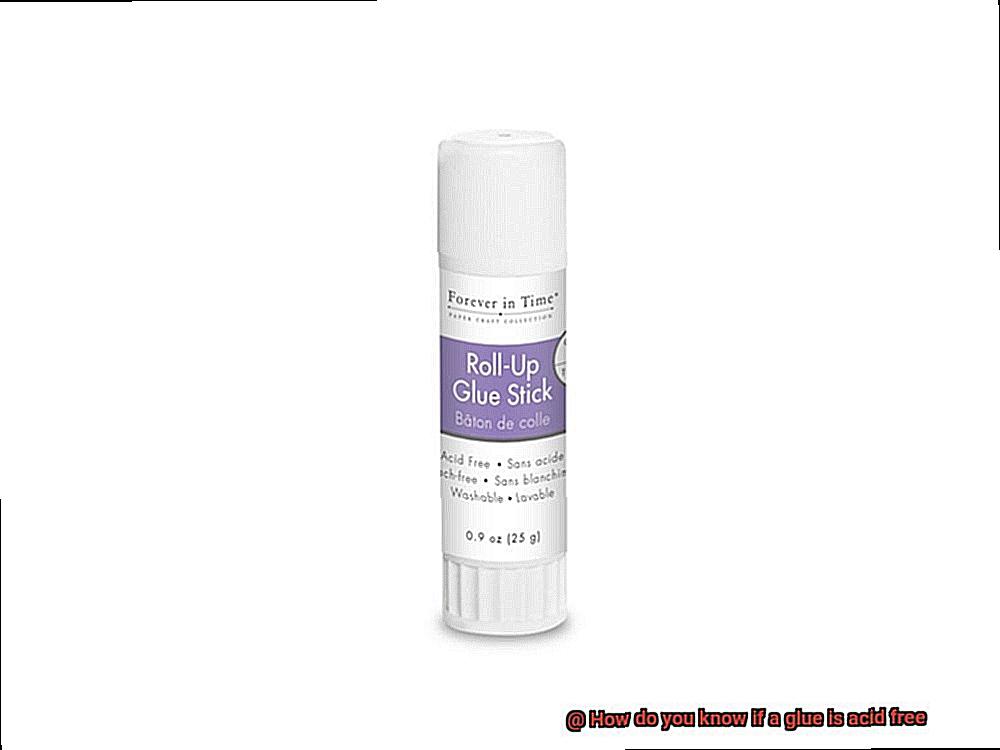
Certifications and Symbols:
Recognized organizations provide certifications for acid-free glues. When scrutinizing packaging, watch for logos or labels from renowned associations like the Acid-Free Association or ISO. These certifications guarantee that the glue has met rigorous standards to earn the acid-free status.
Understand the Product Label:
Take time to read and understand the information provided on the product label. Look for any warnings or precautions related to acidity. If the label specifically mentions safe usage on photographs or scrapbooking, it indicates that the glue is acid-free. Conversely, if there are warnings about discoloration or deterioration on certain materials, it suggests that the glue may contain acidic components.
Analyze Composition Details:
Some glues may disclose their composition on the label, providing valuable insights into their acidity levels. Look for ingredients like “pH stabilizers” or “alkaline buffers” – common features of acid-free glues that neutralize acidity and ensure long-lasting protection for your crafts and photographs.
Conduct Further Research:
If a glue’s label does not explicitly state whether it is acid-free, additional research may be necessary. Reach out to the manufacturer directly, either through their website or customer service, to obtain accurate information on the glue’s acidity levels. This step ensures that you have all the necessary details before making your final decision.
Examining the Ingredients
Well, it’s high time we take a closer look at those ingredients and figure out if your glue is acid-free or not.
Let’s start with the troublemaker known as acetic acid. This sneaky little culprit is found in vinegar and packs a serious acidic punch. If your glue has acetic acid on its ingredients list, that’s a clear sign that its pH value is on the low side, meaning it’s acidic. So, be sure to keep an eye out for this troublemaker when examining your glue.
Now, let’s talk about sulfuric acid – a true troublemaker, especially in industrial-grade adhesives. But when it comes to delicate materials or paper-based projects, steer clear of glues that contain sulfuric acid. This acidic beast has the power to cause serious damage, and we definitely don’t want that, do we?
But fret not. There’s a glimmer of hope in the glue world – pH-neutral and alkaline glues. These beauties have a balanced pH level or even a higher pH value, making them safe choices for acid-free gluing goodness. So, keep your eyes peeled for these magic keywords on the packaging.
And if you want to be absolutely certain, look for certifications from trustworthy organizations like the Acid-Free Certification Program or the Archival Products Association. These fancy badges of honor mean that the glue has been put through rigorous testing and verified as acid-free. Talk about peace of mind.
Considering the Reputation of the Brand
In this blog post, we will dive into the world of glue reputation and uncover the secrets to determining if a glue is truly acid-free. Get ready to become an expert detective in the quest for safe and reliable adhesives.
Research the Brand’s Background:
Begin your detective work by delving into the brand’s history and background. Look for well-established brands that have stood the test of time. These seasoned players in the industry have a reputation to uphold and are more likely to prioritize the quality and safety of their products. Remember, experience often speaks volumes.
Seek Customer Feedback:
The voices of fellow glue enthusiasts can be an invaluable resource. Check online reviews, scour social media platforms, and seek recommendations from trusted sources such as friends, family, or industry professionals. Positive customer feedback is a strong indication that a brand produces high-quality adhesives.
Certifications and Endorsements:
Trustworthy certifications or endorsements can provide an extra layer of reassurance when it comes to acid-free glues. Keep an eye out for certifications from reputable organizations or industry associations that guarantee the acid-free nature of a product. These certifications serve as a mark of quality and reliability.
Transparent Product Labeling:
A reputable brand values transparency and provides clear product information. Look for glues with labels that explicitly state whether they are acid-free or not. Some brands go the extra mile by offering additional information on their websites or product descriptions, explaining their manufacturing processes and quality control measures.
Seeking Recommendations from Experts
Today, we delve into the importance of seeking recommendations from experts when determining if a glue is acid-free. This information is crucial, so don’t miss out.
Why are experts crucial in this quest for the perfect adhesive? These knowledgeable individuals have spent years studying glues and their properties. They possess invaluable insights based on their experience with different types of adhesives. When it comes to determining if a glue is acid-free, who better to turn to than these experts?
But how do we find these magical glue gurus? They come in many shapes and forms. Chemists, materials scientists, or professionals from industries that frequently use glues, like manufacturers or craftspeople, are great options. These experts possess intricate knowledge about glues and can guide us in the right direction.
Now that we’ve identified our experts, it’s time to ask them some burning questions. What tests or methods can be used to determine if a glue is acid-free? Are there specific characteristics or properties that acid-free glues usually possess? Are there any industry standards or certifications we should keep an eye out for?
By seeking recommendations from these experts and asking the right questions, we gain a deeper understanding of how to assess the acid content of glues. Armed with this knowledge, we can confidently choose glues that are safe for our projects.
However, it’s not just about finding the right glue – it’s also about spreading the word. Including quotes and insights from these experts in our articles or sharing their recommendations with fellow crafters adds credibility and enhances our collective knowledge.
Conducting a Small Test
Don’t leave the acidity of your glue to chance. In this article, we will guide you through the process of conducting a small test to determine if a glue is acid-free. By following these simple steps, you can ensure that your projects remain safe and secure, without any worries about deterioration over time.
Step 1: Gather your supplies
To conduct this test, you will need the following supplies:
- The glue you want to test
- A pH testing kit or strips
- Distilled water
- A clean, non-reactive container
Step 2: Prepare a sample
Apply a thin layer of the glue onto a clean surface, such as glass or plastic. Let it dry completely according to the manufacturer’s instructions. This ensures accurate results.
Step 3: Cut out a small section for testing
Using a clean knife or scissors, carefully cut out a small section of the dried glue. This sample will be used for the pH test.
Step 4: Follow the instructions of the pH testing kit
Every pH testing kit comes with instructions and color-coded charts. Dip the sample into distilled water and then into the pH testing solution. Observe any color changes and refer to the chart provided to determine the pH level of the glue.
Step 5: Interpret the results
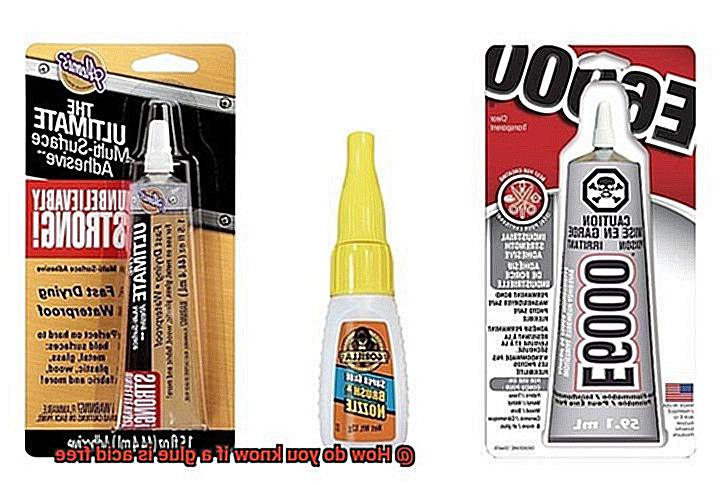
Acid-free glues typically have a neutral pH level between 6 and However, consider your project’s specific requirements. Some glues designed for paper crafts may have slightly acidic pH levels for better adhesion on certain surfaces. Keep this in mind when interpreting your test results.
Additional tips:
- For precise measurements, use a digital pH meter.
- Remember that this small test provides a general indication of acid-free properties.
- Consult glue gurus or industry professionals for specific recommendations.
jc97huD5GeQ” >
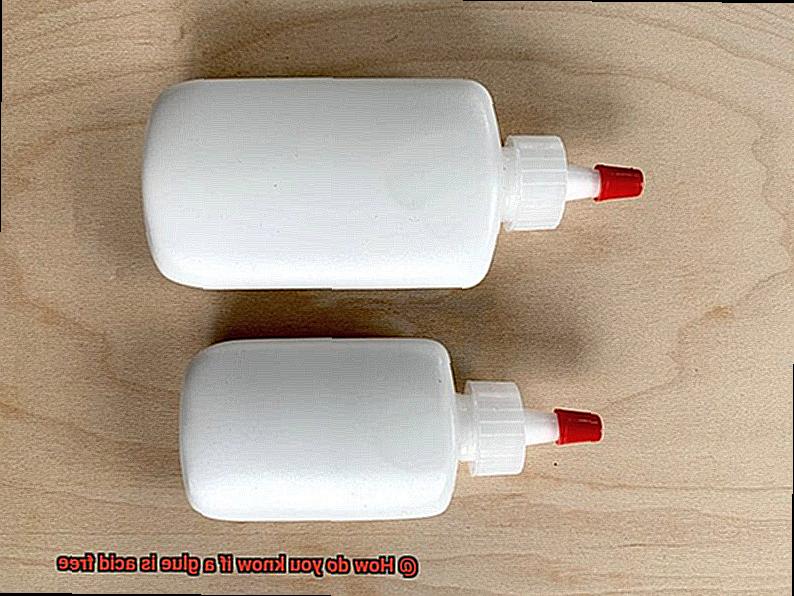
Conclusion
In conclusion, determining if a glue is acid-free requires careful attention and consideration. To ensure you are selecting the right glue for your projects, there are several steps you can take.
Start by examining the product labeling. Look for keywords like “acid-free,” “pH neutral,” or “archival quality” on the packaging. These clues indicate that the glue is safe to use on delicate materials without causing damage over time.
Certifications from reputable organizations such as the Acid-Free Association or ISO can provide further assurance of a glue’s acid-free status. These certifications act as a stamp of approval, indicating that the glue has undergone rigorous testing to meet specific standards.
Don’t forget to scrutinize the ingredients list. Avoid glues that contain acidic components like acetic acid or sulfuric acid, as these can be harmful to your materials. Instead, look for ingredients such as polyvinyl acetate (PVA) or pH stabilizers, which suggest a neutral or alkaline pH level.
Considering the brand’s reputation is also important when choosing an acid-free glue. Well-established brands with a history of producing high-quality adhesives are more likely to prioritize safety and quality control. Do some research and read reviews to get an idea of which brands are trusted in the industry.
Seeking recommendations from experts in the field can provide valuable insights into which glues are truly acid-free. Chemists, materials scientists, or professionals in related industries have knowledge and experience that can guide you towards the best options available.
Finally, conducting a small test using a pH testing kit will give you additional confirmation of a glue’s acidity levels. Follow the instructions provided with the kit to test a small sample of the glue and interpret the results based on color changes and pH level charts.
By following these steps and considering all available information, you can confidently select an acid-free glue that will preserve your cherished memories and delicate creations for years to come.


